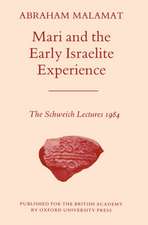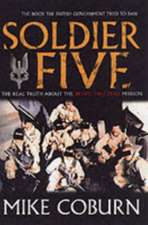The Monetary History of Iran: From the Safavids to the Qajars: Iran and the Persianate World
Autor Rudi Matthee, Willem Floor, Patrick Clawsonen Limba Engleză Hardback – 24 apr 2013
Preț: 441.21 lei
Preț vechi: 573.18 lei
-23% Nou
Puncte Express: 662
Preț estimativ în valută:
84.42€ • 88.62$ • 70.07£
84.42€ • 88.62$ • 70.07£
Carte tipărită la comandă
Livrare economică 11-25 aprilie
Preluare comenzi: 021 569.72.76
Specificații
ISBN-13: 9781780760797
ISBN-10: 1780760795
Pagini: 320
Ilustrații: 92 colour in 24pp plates, 7 maps, 27 tables
Dimensiuni: 156 x 234 x 36 mm
Greutate: 0.7 kg
Editura: Bloomsbury Publishing
Colecția I.B.Tauris
Seria Iran and the Persianate World
Locul publicării:London, United Kingdom
ISBN-10: 1780760795
Pagini: 320
Ilustrații: 92 colour in 24pp plates, 7 maps, 27 tables
Dimensiuni: 156 x 234 x 36 mm
Greutate: 0.7 kg
Editura: Bloomsbury Publishing
Colecția I.B.Tauris
Seria Iran and the Persianate World
Locul publicării:London, United Kingdom
Notă biografică
Rudi Matthee is Professor of History at University of Delaware. He is the author of Persia in Crisis: Safavid Decline and the Fall of Isfahan (I.B.Tauris) and The Pursuit of Pleasure: Drugs and Stimulants in Iranian History, 1500-1900. Willem Floor is an independent scholar specialising in the history of Iran in the Safavid and modern ages. His publications include A Social History of Sexual Relations in Iran; Iran and the World in the Safavid Age (with Edmund Herzig, eds, I.B.Tauris); Labor and Industry in Iran, 1850-1941 and The Persian Gulf: A Political and Economic History of Five Port Cities 1500-1730. Patrick Clawson is Deputy Director of Research at the Washington Institute for Near East Policy and senior editor of Middle East Quarterly.
Cuprins
IntroductionChapter One: The Monetary System during the Safavid Period: Money, Metals and MintingIntroductionII. Limits on the Use of Money and the Scarcity of Current CoinScarcity of Current Coin Minting Coinsi Mintsii Technical Processiii Goldiv copperv Silver vi Local Currency Systems VI. ArbitrageChapter Two: The Trade in Bullion in Safavid TimesI. IntroductionII. Government Policy until 1669III. Restrictive Measures in the Period 1669-1684IV. Developments after 1684Chapter Three: The Politics of MintingIntroductionWeight ReductionsMonetary Matters under Shah SulaymanThe Monetary Crisis of 1684-85Developments after 1685Chapter Four: The Monetary System under the Afsharids and Zands, 1732-1794.The Age of CopperIntroductionGhilzay Afghan Period (1722-1729)Last Safavids (1722-1736)Afsharid period (1736-1750)Afsharid Successors (1747-1750)Zand Period (1759-1794)Chapter Five. The Monetary System under the Qajars, 1779-1925I. Minting CoinsA. Traditional Mints i. Running the mints ii. The production processB. Reducing the Metal Content of CoinsC. A Modern National MintII. Fragmented Currency Systemi. Overview: Measuring Value in a Three-Metal Systemii. Local Currencies Other than the National Standardiii. Copper Coinsiv. Silver Coinsv. Gold Coinsvi. Limited Use of Money in TradeIII. Supply of Bullion and Speciei. Local Production of Bullionii. Importing BullionIV. Silver's Loss of Valuei. Adjusting Ratios among Coinsii. Switching to a Gold Standard?V. Paper Currencyi. IBP's Practicesii. Limits to Acceptance of Paper CurrencyVI. Money at the End of the Qajar DynastyAfterwordBibliographyIndex














